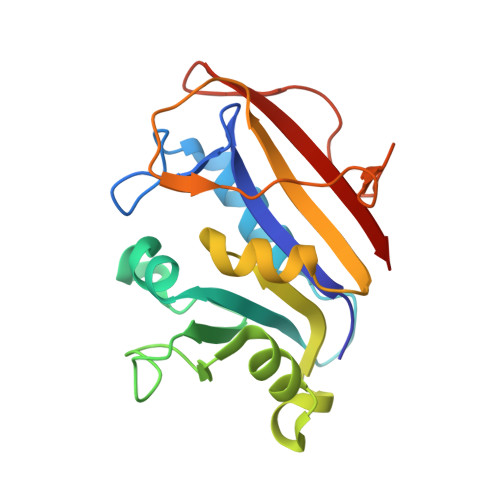Design, synthesis, and X-ray crystal structure of classical and nonclassical 2-amino-4-oxo-5-substituted-6-ethylthieno[2,3-d]pyrimidines as dual thymidylate synthase and dihydrofolate reductase inhibitors and as potential antitumor agents.
Gangjee, A., Li, W., Kisliuk, R.L., Cody, V., Pace, J., Piraino, J., Makin, J.(2009) J Med Chem 52: 4892-4902
- PubMed: 19719239
- DOI: https://doi.org/10.1021/jm900490a
- Primary Citation of Related Structures:
3GHC, 3GHV, 3GHW, 3GI2 - PubMed Abstract:
N-{4-[(2-Amino-6-ethyl-4-oxo-3,4-dihydrothieno[2,3-d]pyrimidin-5-yl)thio]benzoyl}-L-glutamic acid 2 and 13 nonclassical analogues 2a-2m were synthesized as potential dual thymidylate synthase (TS) and dihydrofolate reductase (DHFR) inhibitors and as antitumor agents. The key intermediate in the synthesis was 2-amino-6-ethyl-5-iodothieno[2,3-d]pyrimidin-4(3H)-one, 7, to which various arylthiols were attached at the 5-position. Coupling 8 with L-glutamic acid diethyl ester and saponification afforded 2. X-ray crystal structures of 2 and 1 (the 6-methyl analogue of 2), DHFR, and NADPH showed for the first time that the thieno[2,3-d]pyrimidine ring binds in a "folate" mode. Compound 2 was an excellent dual inhibitor of human TS (IC50 = 54 nM) and human DHFR (IC50 = 19 nM) and afforded nanomolar GI50 values against tumor cells in culture. The 6-ethyl substitution in 2 increases both the potency (by 2-3 orders of magnitude) as well as the spectrum of tumor inhibition in vitro compared to the 6-methyl analogue 1. Some of the nonclassical analogues were potent and selective inhibitors of DHFR from Toxoplasma gondii.
- Division of Medicinal Chemistry, Graduate School of Pharmaceutical Sciences, Duquesne University, 600 Forbes Avenue, Pittsburgh, Pennsylvania 15282, USA. gangjee@duq.edu
Organizational Affiliation:


















